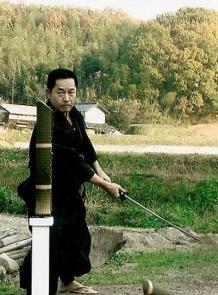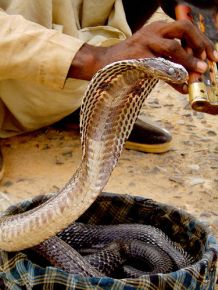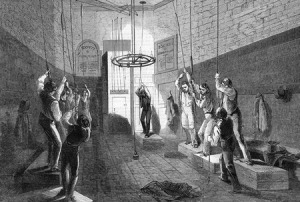We are starting to develop new practice leaders for Soh Daiko and this post will address some rehearsal strategies. All of the current practice leaders have an individual style and set of priorities and, of course, there are countless ways to run an effective rehearsal. What follow are simple suggestions regarding overall rehearsal structure and drills. In the third post, I will discuss rehearsal strategies for actual pieces.
Overall structure of your rehearsals
In Soh Daiko, we have short rehearsals (Thursday evenings), longer rehearsals (Saturdays), and “no-sound” rehearsals (certain Saturdays). Plan accordingly and always remember to keep your talking to a minimum. Directions should be precise.
Short rehearsals: In general, people can focus well for a limited amount of time. After we bow in, stretch, and take out the drums, we usually have 90 minutes to play. For these rehearsals, you might consider starting with drills (15 minutes), and playing three pieces from the repertoire (25 minutes each). Given this short amount of time, you will only be able to address and fix two small “problems” within each piece. Ideally, you will pinpoint and foreshadow these problems in the drills.
Longer rehearsals: Here, you can run pieces multiple times or play through an entire program along with transitions. Think in bigger terms: Is the piece working as a whole? Is the kata consistent among all the performers? Are there particular moments in the piece that sound fuzzy or unclear? How are the transitions between pieces? Does the program work?
I would still advocate addressing only two problems within each piece, but these problems can be larger in scope. In other words, you could focus on the overall kata of a repeating pattern (Matsuri pattern, Hachidan middle pattern, Miyake pattern), the overall kata of a particular section (Matsuri jumps, Hachidan intro or jumps, Shishimai), the strength and structure of solos, or timing issues. For these rehearsals, you might consider longer drills (30 minutes), and four or five pieces from the repertoire (30-35 minutes each). In exceptional cases, you can spend 45 minutes on a single piece, but don’t do this too often. Attention starts to waver after an extended amount of time. If you really want to spend time on a single piece, make sure to come up with distinct drills in short chunks of time, and then put it all together with a final run-through of the piece.
No-sound rehearsals: These rehearsals are a little bit more difficult to plan and you’ll notice that people will feel a little less satisfied drumming on pads for an entire afternoon. However, you should use this time to the group’s advantage. Avoid working on strength or power. Instead turn your attention to timing issues, kata, learning new positions, working on solos, or transitions. You could use these rehearsals to keep us on top of every piece in the repertoire, and in this way, you might consider drills (30 minutes), and every piece from the repertoire (20-25 minutes or so).
Drills
Coming up with imaginative drills can be fun, but remember that drills should sharpen our minds and bodies. Ideally a drill will address one particular issue (of course, touching on others at the same time): individual and group timing, strength, technique, or memorization of a pattern. If you have to spend a lot of time explaining the drill, it’s probably not worth the effort. There may be exceptions—for example, an extended timing drill that you’ll consistently use throughout the year—but I would advocate the “old” stand-by drills with one clear direction before starting (“Let’s focus on _____”).
Renshu: As I’ve mentioned before, I love this drill. It focuses on basic technique and reveals any problems with the doro-suku. If the group slows down during the doro-suku section, it means that this basic drumming technique is not working. You can always beneficially practice the doro-suku (strong hit; immediate relaxation of the grip and wrist; smooth and successful pull-back).
Repertoire patterns (Chichibu, Hachidan, Matsuri): These drills can always be employed to reinforce memorization, build endurance, and group kata. You can double the effectiveness of your drill by having different people play the time-keeping instrument (cannon, kane, or lead shime). If you know who will be performing this part, go ahead and have them play it. They will become more accustomed to the position, will learn how to lead the group, and will be able to pinpoint any deficiencies in their playing (more than likely, their left hand). Of course, you could have other people play the time-keeping instrument as well so that they understand the position and its relation to the other parts. After all, everyone in a taiko group should be able to play a consistent straight, swing, and horse beat.
Timing patterns, technique patterns: All fine, but make sure they are effectively addressing a basic issue.
Overall structure of the drills
Please consider the order and drum-layout of your drills. Minimize the amount of time and movement between each drill. In other words, if you start with drums on the up-stand, do all the drills in this position before moving to another position. This will save you one minute, which may not seem like a lot, but any effective practice leader will take advantage of that extra minute.
For Soh Daiko, I would recommend starting with drums on the up-stands (allowing for the most number of available drum heads). Do Renshu, Chichibu pattern, Hachidan X-pattern, Oroshi or timing drills. Then slightly turn the drums and do the Hachidan middle pattern. Then, if you have time, place the drums down on the mat and do another drill, or switch to slant or Miyake stands. During the drill section, everyone should be drumming as much as possible. Aim for 13 minutes of drumming during any 15-minute section.
 No wrist adjustment as you raise your arm. Slight reach away from the body. Slice down.
No wrist adjustment as you raise your arm. Slight reach away from the body. Slice down. Adjust the wrist with a slight rotation as you raise your arm. The arm is fluid and flexible.
Adjust the wrist with a slight rotation as you raise your arm. The arm is fluid and flexible.  No wrist adjustment as you raise your arm. Pull the bachi down.
No wrist adjustment as you raise your arm. Pull the bachi down.